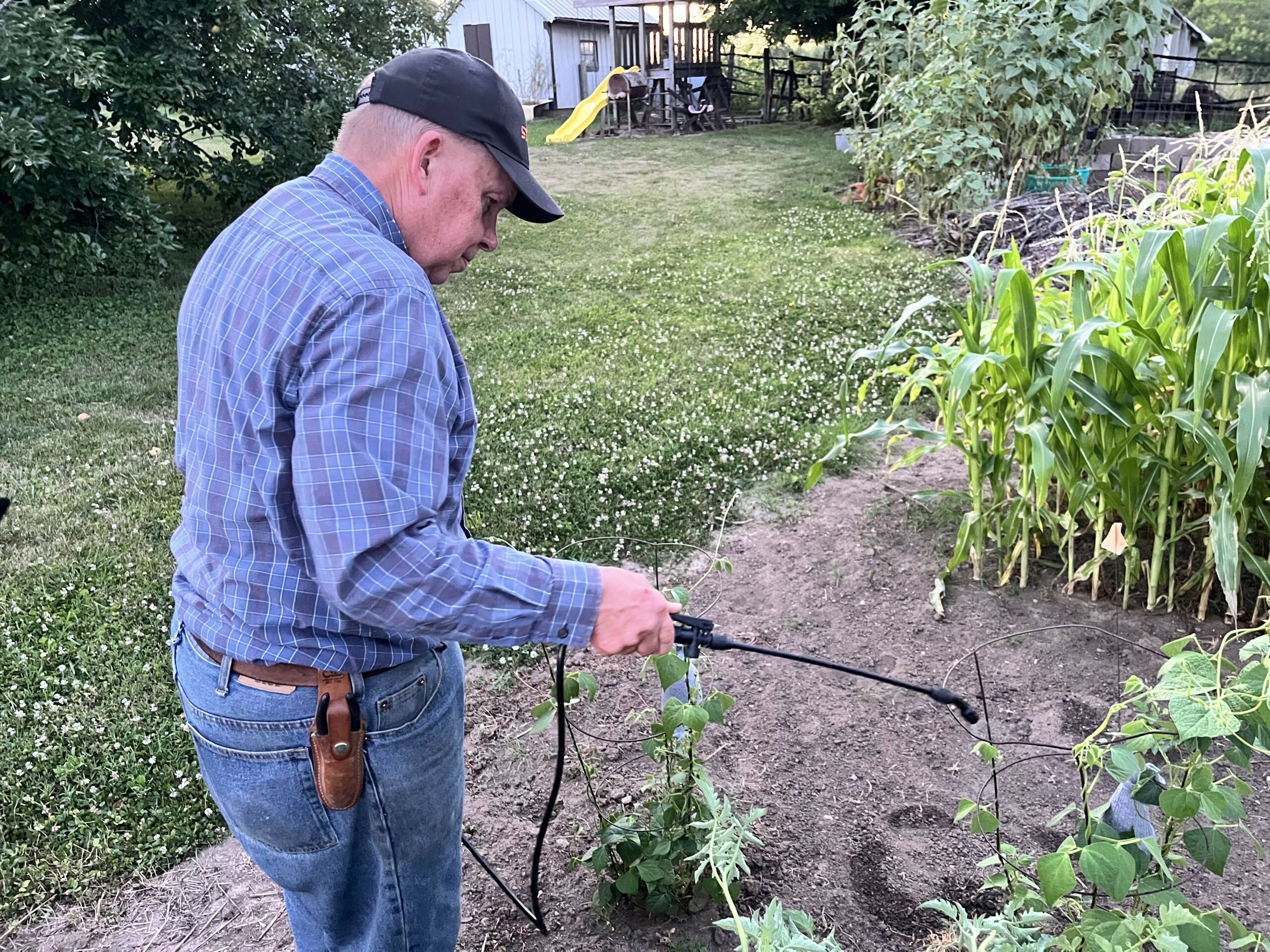The Hort Report: Getting rid of those pesky Japanese Beetles

The weather is hot and humid most days with little or no rain. Hopefully we will be getting more rain in the coming days.
The Japanese Beetles has started to show itself. They appear in late June and are around for about six weeks. One customer shows me one inside a bag with a leaf.
Someone Facebook the Greenwell’s Greenhouse Group with pictures, found some on the green beans at the St. Mary Community Garden. They feed on over 300 different types of plants and trees. Around here mostly green beans, grapes, berries bushes and roses.
Things to get rid of them, hand pick them off. Make sure you put them in water. I put a bucket of water under the leaves. Falling off the leaves into the water and drown. Do this early in the morning or about dark when they aren’t very active.
Some people put up Japanese Beetle Traps, they really work. A couple of years ago, Laura and I had seven traps out. We would dump the traps into five-gallon buckets of water. I dumped 10 gallons of water and beetles into a creek for over 15 days.
Then next year we had less than 5% of the total number of beetles that we had the previous year. The big problem with traps is they can attract Japanese Beetles from a long way off. If you do use traps, put them far away from your garden.
Next you can use some type of insecticide to kill them. This works if you realize that most types if insecticides will kill both beneficial and harmful insects. So be careful when doing this. If it can kill an insect it can harm you too.
A year ago I started using Neem Oil. Spraying Neem Oil at the first sign of damage caused by Japanese Beetles. Neem Oil is a safe type of spray to use to fight and kill them. Neem Oil contains potassium bicarbonate. Adult beetles ingest the chemical in the Neem Oil as they feed. This is passed on to the eggs they lay. The larvae that hatch die before becoming adults. This stops the life cycle of the Japanese Beetles.
Neem Oil will stay on the leaves and stems of plants for several days. If rain or watering doesn’t wash it off. I respray Neem Oil about every two or three days, so it is there for the beetles to ingest.
Neem Oil is very safe to use when targeting the plants the Japanese Beetles are attacking. This way you are less likely to harm beneficial insects. Spraying Neem Oil early in the morning or before dark you are more likely not to harm beneficial too. By spraying early in the morning or before dark, it stays on better and last longer and won’t burn the leaves. Neem Oil works on Squash Bugs like Japanese Beetles.
When Japanese Beetles breed they drop to the ground laying 40-60 eggs in groups of one to five at a time. They lay eggs in grassy lush soil. Eggs hatch in about two weeks turning into larvae then into grubs. They start to feed on the roots of the grass. In late summer and early fall they go deeper into the soil to winter.
In early spring grubs move closer to the surface feeding on roots. Then change into the pupal stage, 10 days later becoming adults and coming out of the soil.
During the time they are in the soil is a time you can treat the soil with an insecticide. That they ingest while in the larvae, grub or pupal stage. Since Japanese Beetles don’t travel far to lay eggs. You should be able to see were to treat the soil with the insecticide. This is a great way to fight Japanese Beetles the rest of the year.
I really appreciate all your questions in the past and look forward to them in the future. Thanks and please keep them coming. Call me at 573-588-2040 Shelby County Implement Shelbina, Mo. Email sci63468@hotmail.com Facebook Greenwell’s Greenhouse Group. Ask me anytime you see me.
Hope you enjoy the weather and this issue of The Hort Report.

Pat Greenwell is the owner of Shelby County Implement in Shelbina, Mo. He was a high school agriculture teacher for 11 years. He has taught adult vocational agriculture since 1987. He also is a research assistant at the Truman State University Ag Department Farm.
Miss Clipping Out Stories to Save for Later?
Click the Purchase Story button below to order a print of this story. We will print it for you on matte photo paper to keep forever.

